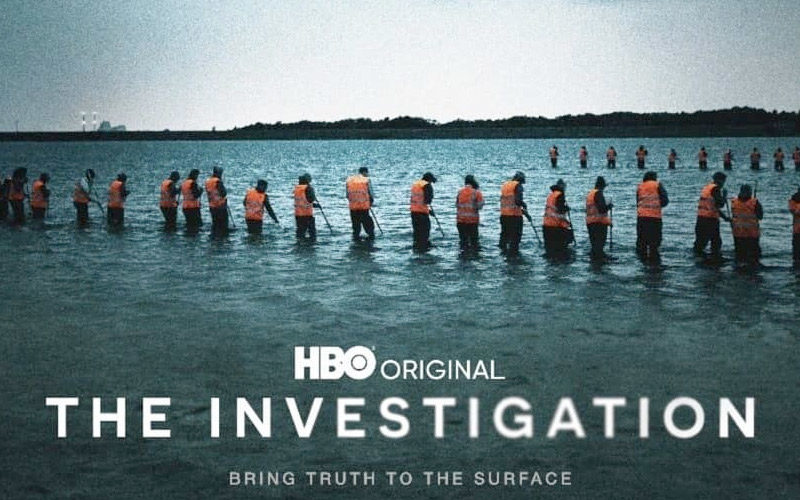‘The Investigation’ Miniseries Review: A Ethical True Crime Drama

The Danish six-part miniseries, The Investigation, is written and directed by Tobias Lindholm and based on the real-life investigation of the death of thirty-year-old Swedish journalist Kim Wall.
The miniseries’ primary focus is chief inspector Jens Moeller of the Copenhagen Police’s Homicidal Unit, who does everything from comforting Wall’s parents to discussing the case with the special prosecutor Jakob Buch-Jepsen. If you are looking for a dark, horrific true-crime drama or a fast-paced detective story, then The Investigation is not for you. The miniseries details what a slow, methodical murder investigation looks like in Denmark.
Chief Inspector Jens Moeller is a compassionate non-plussed leader, who is dogged in his approach to solving the mystery of Kim Wall’s death. As the head of Copenhagen’s Homicidal Unit, Jens is like the general overseeing all the investigation aspects. Like most cop shows, he is a bit of a workaholic. Jens’ focus on Kim’s case leads his adult, newly pregnant daughter Kristine to refuse to speak to him anymore. She is worried that Jens won’t be there for her unborn daughter because they are not his priority. Though, unlike other hard-nosed detectives, he doesn’t drink his worries away or damage furniture. When Jens needs a break, he takes his dog out hunting in the forest or shoots targets at the armory. He is the most even-keeled person on his team. Jens doggedly looks through case files, pesters the forensic pathologist for the cause of death, and asks the special prosecutor Jakob to try the murder case.
Jens also has a genuinely compassionate side. One of his inspectors, Marbitt Porse, forgets one of the case folders in a suspect’s office. She left the file alone for a couple of hours. Marriott offers to resign since she knows it could be detrimental to their case, but Jens refuses to allow her to quit. The chief inspector talks about how all inspectors make mistakes, but it’s all about learning from them. Jens personally keeps Kim’s parents Ingrid and Joachim, up to date on the case throughout the whole investigation.
The Investigation is not a graphic, bloody, or dark true-crime drama miniseries. Tobias Lindholm never reveals Kim Wall’s remains or the murder itself on-screen. There are barely any scenes with the killer Peter Madsen. Every story Madsen concocts about what happened that night in the submarine is told through the inspectors as they try to figure what occurred.
The only “graphic” image the audience sees is the drawing of Kim’s torso that Jens shows to Wall’s parents. There are a couple of markings showing where their knife stab wounds are located. Forensic divers bring up black bags with body parts from the sea, but it never reveals what is inside. Jens, Marbitt, Musa Amin, and the other inspectors discuss all the possible murder scenarios, but only in a purely technical way. Kim’s murder case is physically and mentally grueling on everybody involved, but there is no dark, twisty investigation into the killer’s mindset. The miniseries is about the inquiry, not the murder.
Ingrid and Joachim Wall humanize Kim. When Joachim visits the parents at their house in Trelleborg, Sweden, he shows Jens a map marking everywhere where Kim traveled as a journalist. The parents protect their daughter’s sources since she cared about their safety, making sure that the inspectors promise to only look through relevant files in her laptop.
Ingrid is the center of two of the most emotional scenes in the miniseries. After the news of Kim’s death comes out, a line of Trelleborg residents forms outside the Wall’s home. Each of the neighbor’s gifts Ingrid a flower to honor Kim. The mother’s spirits are lifted with all the love and support her community is giving her.
The second scene is at the end of the miniseries. Ingrid created a scholarship fund for young journalists who want to make a difference by telling marginalized people’s stories worldwide. The mother speaks in front of an auditorium of young students. Ingrid gives a beautiful speech about the kind of woman and journalist that Kim was. She ends by reminding the students and, in a way, the audience to live their lives fully.
Murder investigations can be slow and laborious, which the miniseries does a great job demonstrating. Tobias uses several techniques to show the kind of patience and dedication it takes to make a murder case against a Denmark citizen.
First is the marking of time passing by the presence of intertitles stating the month and year. The investigation started in August 2017, and the trial began in March 2018.
The second technique is revealing the particular way the inspectors find evidence. For example, the divers have to constantly dive into the ocean to look for her body parts, the submarine, and other evidence. The dive leader berates Jens about how his men are exhausted from spending days diving deep into the water and looking for evidence. The inspectors don’t find her head until they use a detector dog and some math equations to locate the body parts.
The last central technique is the check-ins between Jens and Jakob. Every time Jakob asks the chief inspector for updates, the team doesn’t have enough evidence to prove that Madsen murdered Kim. Jakob is so nervous when he is about to try Madsen for his multiple crimes at the end of the series because of the number of work-hours needed to deliver him a strong court case.
I would recommend The Investigation to anybody who is willing to give a chance to a subtitled television show and enjoys honest depictions of true crimes. This miniseries is not a typical true-crime drama that sensationalizes the crime or murders but instead honors the investigators and the victim.


Excellent review as I loved this series and you captured it perfectly! I particularly loved your statement, “The miniseries details what a slow, methodical murder investigation looks like in Denmark” as that is absolutely true.
Thank you!